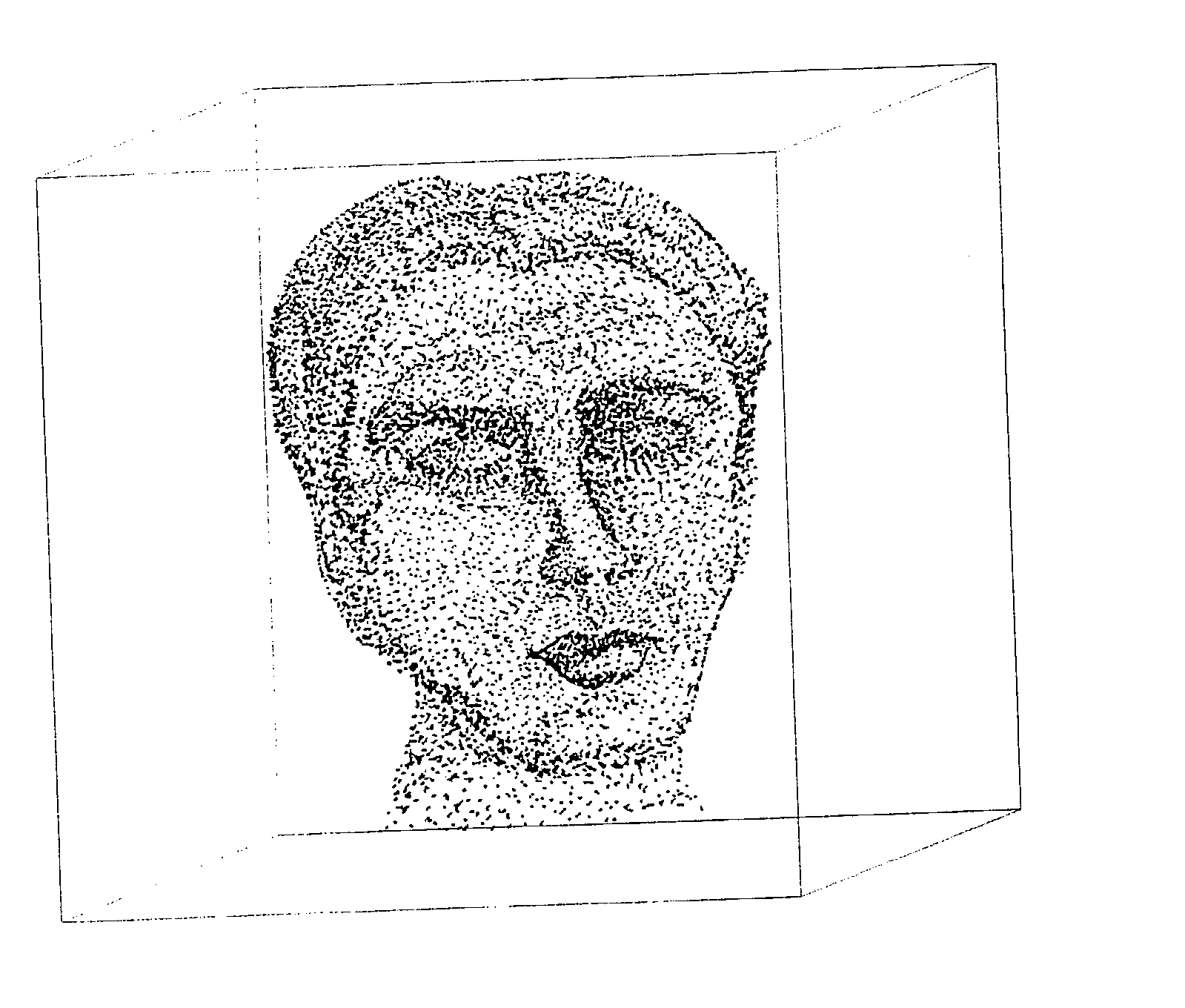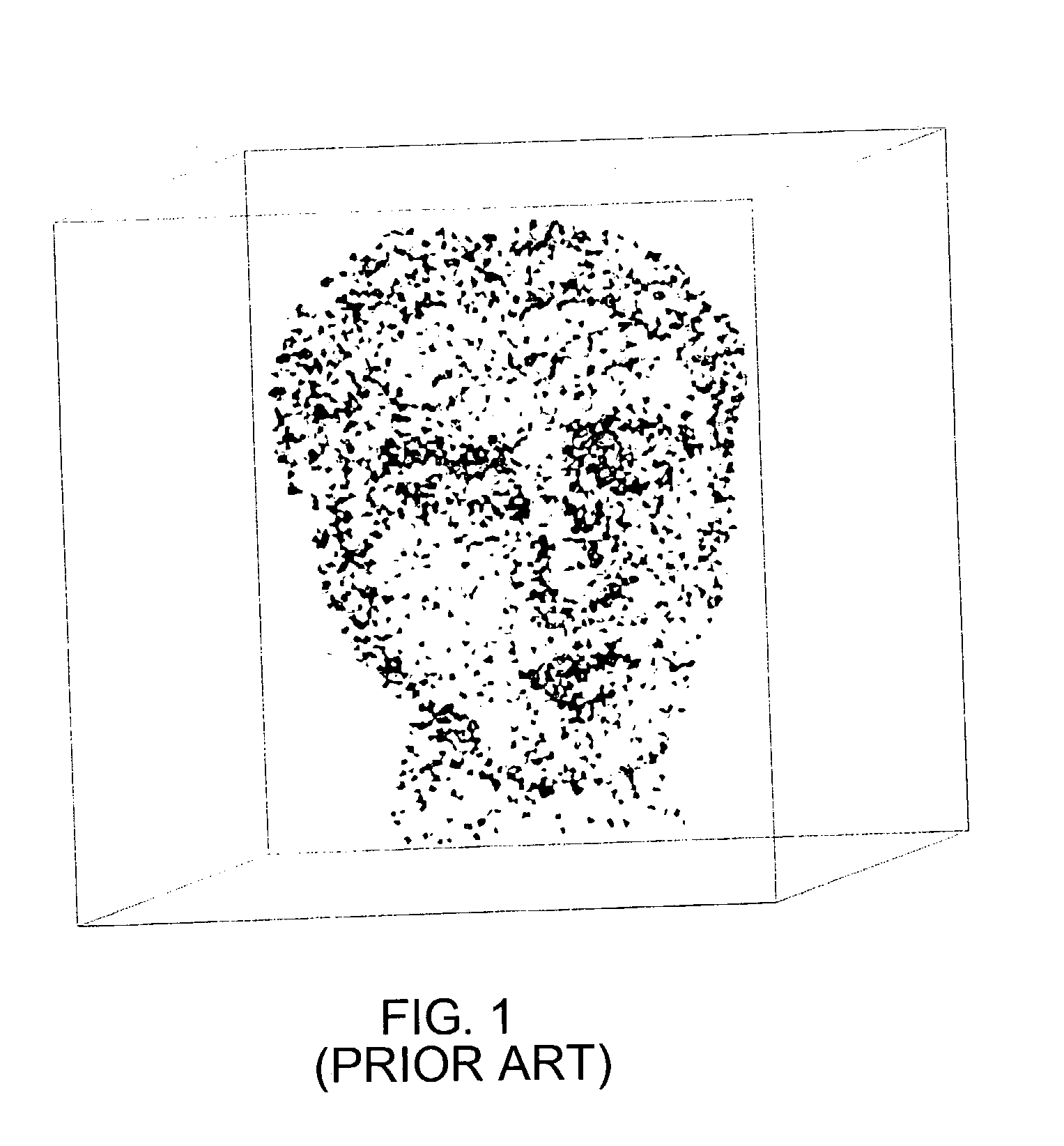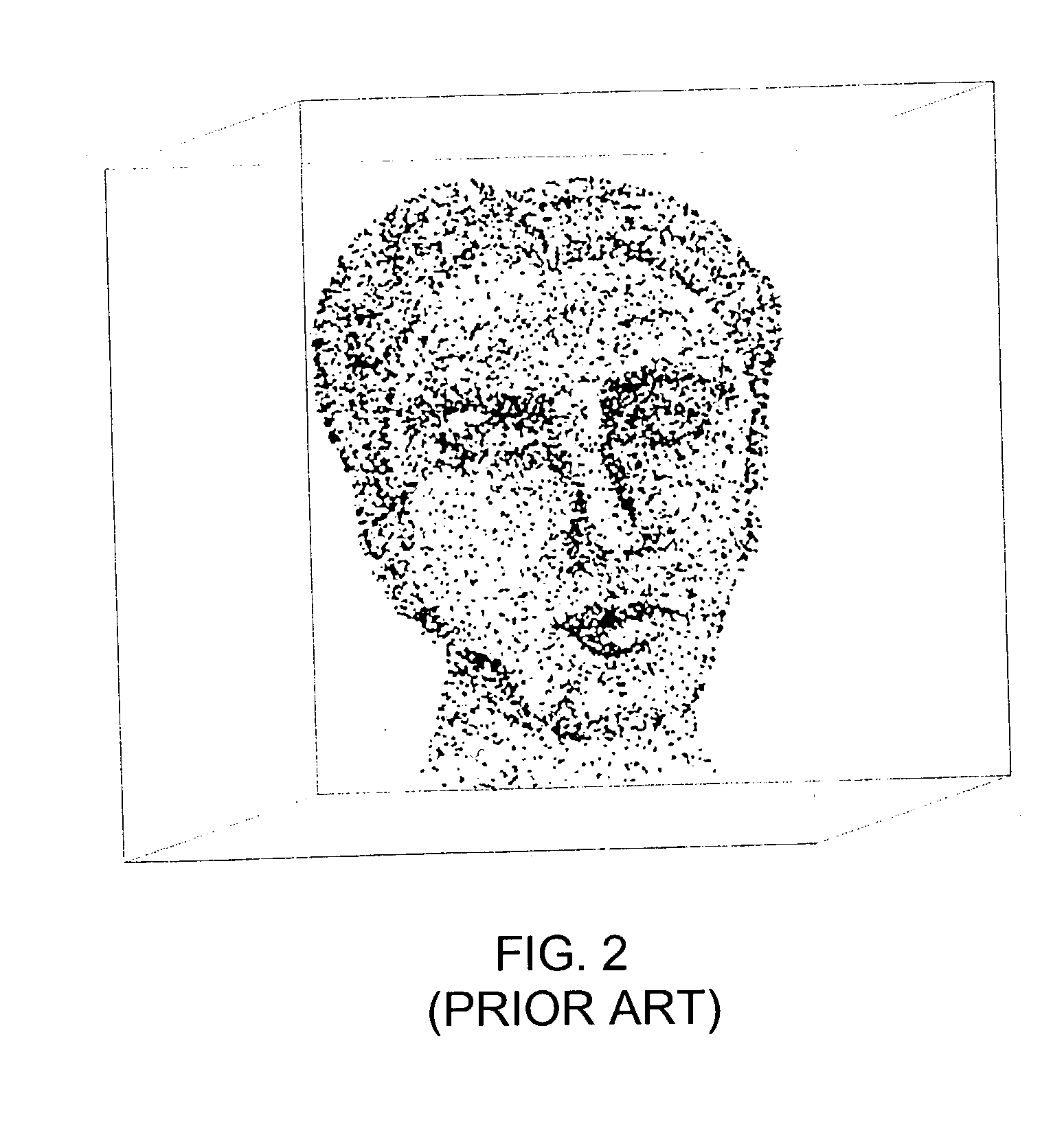Subsurface engraving of three-dimensional sculpture
a three-dimensional sculpture and surface engraving technology, applied in the field of sculpture creation, can solve the problems of too close proximity of spots/dots/cracks/destructions, cracking/destruction at the concentration point of laser beams, and sculpture value loss
- Summary
- Abstract
- Description
- Claims
- Application Information
AI Technical Summary
Benefits of technology
Problems solved by technology
Method used
Image
Examples
Embodiment Construction
[0027] FIG. 4, taken from Pat. No. 5,575,936, mentioned above and incorporated herein by reference, illustrates a basic method of subsurface engraving in a solid transparent matrix. Fractures are produced in the matrix 15 by a laser beam 12 that is focused within the matrix 15 by a lens 13. The solid matrix 15 is positioned on a movable platform 16 which is moved under direction of the controller 17. Thus the laser 11 can produce a plurality of destructions / disruptions at the focal point 14 which is moved within the matrix 15 from dot to dot.
[0028] Refinements in this procedure are added in the other patents mentioned above, which are also incorporated herein by reference. The laser may be pulsed or operate steady state while the focal point location is changed to produce a plurality of dots. Procedures for operation of the laser apparatus itself and its control are not a novel portion of the present invention and accordingly, are not discussed in detail herein.
[0029] In the present...
PUM
| Property | Measurement | Unit |
|---|---|---|
| transparent | aaaaa | aaaaa |
| temperature | aaaaa | aaaaa |
| physical gel | aaaaa | aaaaa |
Abstract
Description
Claims
Application Information
 Login to View More
Login to View More - R&D
- Intellectual Property
- Life Sciences
- Materials
- Tech Scout
- Unparalleled Data Quality
- Higher Quality Content
- 60% Fewer Hallucinations
Browse by: Latest US Patents, China's latest patents, Technical Efficacy Thesaurus, Application Domain, Technology Topic, Popular Technical Reports.
© 2025 PatSnap. All rights reserved.Legal|Privacy policy|Modern Slavery Act Transparency Statement|Sitemap|About US| Contact US: help@patsnap.com



